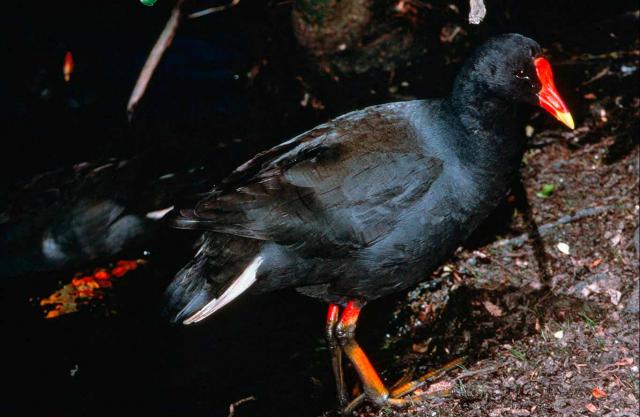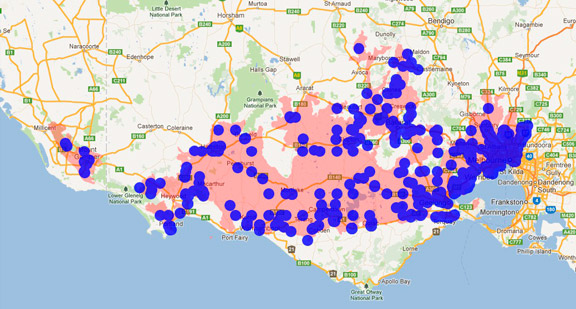A range of teacher professional learning programs will be developed to accompany the Biodiversity of the Western Volcanic Plains online outreach...


Dusky Moorhen
Gallinula tenebrosa
Breeds August-March. A bulky shallow nest is built in rushes or reeds or on floating platforms in open water. May also nest in branches or stumps of waterside trees. In the breeding season, breeding groups of up to 7 birds form. All members of the group assist with incubation of the eggs and feeding the young.
| Details | Description |
| Type | Bird |
| Group | Rail |
| Identifying Characteristics | |
| Distinctive Markings | Yellow-tipped scarlet bill. |
| Diet | Omnivore, feeds in the water and on land. Eats algae, water plants, grasses, invertebrates including molluscs, fruits and seeds. |
| Habitat | Well-vegetated wetlands, lakes, parks, dams, rivers with grassy margins, trees or introduced willows. |
| Native Status | Native to Australia |
| Sounds | Rapidly repeated "krek" or "krok", harsh and repeated screeches. |
| Taxonomy | |
| Phylum | Chordata |
| Class | Aves |
| Order | Gruiformes |
| Family | Rallidae |
| Genus | Gallinula |
| Species | tenebrosa |

Distribution maps indicate current and historic locations where species have been sighted.
Source: Atlas of Living Australia
| Conservation Status | |
| DEPI Advisory List | Not listed |
| FFG Act | Not listed |
| EPBC Act | Not listed |
The conservation status of species is listed within Victoria and Australia.
The Department of Environment and Primary Industry (DEPI) Advisory List consists of non-statutory advisory lists of rare or threatened flora and fauna within Victoria.
The Flora and Fauna Guarantee Act 1988 (FFG Act) lists threatened species in Victoria. Under the Act, an Action Statement is produced for each listed species.
The Environment Protection and Biodiversity Conservation Act 1999 (EPBC Act) is the Australian Government’s key piece of environmental legislation, listing nationally threatened native species and ecological communities.



